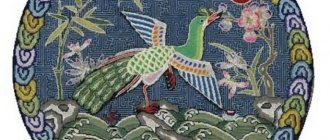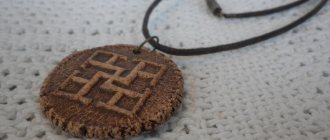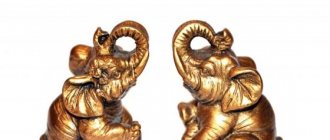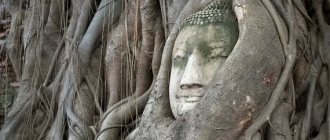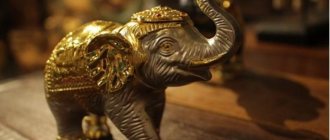In order to climb the social ladder and achieve success in life, of course, you need to be an educated person. Have wisdom and knowledge that will help you move through life. If you want to somehow influence the learning ability of your child or a possible adult who is learning something, to help him develop the qualities necessary for this, activate the northeast direction of your home.
crystal
It is responsible for education and self-improvement. Since ancient times in China, people have actively used Feng Shui symbols for study, so that they help children develop learning abilities, instill a thirst for knowledge and, accordingly, become a wise person in the future.
And now in the modern world, these Feng Shui symbols for studying have not lost their power and can help people who are in the process of learning to improve their memory, be more intelligent and insightful, and overcome laziness.
In the northeastern sector, Earth is considered the main element, and Fire helps it. The energy of knowledge will be activated here by pieces of furniture and decoration in red, pink, orange, brown colors of a triangular or square shape. Items depicting earth and flame.
Bay leaves
In ancient Greece, the leaves of the laurel tree were considered a symbol of wisdom. According to legend, the nymph Daphne, who unrequitedly fell in love with the god of beauty Apollo, was turned into him.
Legends also say that the Delphic oracle chewed and inhaled a pair of bay leaves before predicting the future. As a talisman of wisdom, bay leaf is suitable for people leading an overly active lifestyle.
In ancient Greece, bay leaves were considered a symbol of wisdom.
The smell of laurel can calm the nervous system and help you concentrate on a specific task.
Recommended reading: Polar owl - a magical amulet
Wisdom
In the system of medieval religious allegory, Wisdom has as its attributes a book and a snake (coiled at the feet as prudence).
As part of Wisdom, Prudence (Reason) has many similar symbols, and sometimes replaces Wisdom in the cycles of virtues. At the same time, Prudence, considered worldly wisdom, is a lesser virtue: “The acquisition of wisdom is much better than gold, and the acquisition of intelligence is preferable to choice silver.” Proverbs 16:16
In the Renaissance allegory, Wisdom was secularized and has since been represented by Athena (Minerva), who holds a book (it can be held out by Cupid) or an olive tree and has as her companion a sacred owl. She is usually in armor, with a sword, helmet and shield, which distinguishes her from Prudence, which is similar in other attributes (mirror, snake).
Wine and alcohol were often associated with wisdom and truth, as was water, especially spring water. Wisdom is associated with the colors gold and blue, the number seven and the triangle.
- precious metals and stones: gold, silver, peridot, jade, diamond, pearl, zircon;
- the Dragon;
- griffin;
- peacock;
- sphinx;
- unicorn;
- allegorical figure of Stupidity (as a contrast);
- lotus;
- Walnut;
- heart;
- seven columns;
- scepter;
- scroll;
- sword;
- ring;
- salt;
- language;
- birds;
- bee;
- rat.
Wisdom / Sapientia Prudence / Prudence / Prudentia / Prudence - eng.
Matthew with wisdom;
In medieval paintings, Wisdom holds a book, but is often depicted with a snake coiled at her feet, symbolizing Prudence (Reason). The snake sometimes takes on the appearance of a dragon. Wine and alcohol were often associated with wisdom and truth. The same can be said about water, especially spring water. Symbols of wisdom were the palm tree, precious metals and stones, especially gold and silver, peridot, jade, diamond, pearl and zircon. Wisdom was associated with the colors gold and blue, the number seven and the triangle.
In Renaissance allegory, Wisdom was secularized. Usually she is personified by the ancient Athena (Minerva) in armor, with a sword, helmet and shield (which is different from Prudence, which has no weapons). Wisdom in the form of Minerva has her olive branch and owl, and also a book; the latter may be offered to her to read by Cupid. Solon is at her feet.
As part of wisdom, Prudence has many symbols in common with it, and sometimes replaces Wisdom in the cycles of virtues. Prudence, considered worldly wisdom, is a lesser virtue: “To gain wisdom is better than gold, and to gain understanding is better than choice silver” (Prov. 16:16). Meaning not so much precaution as simply wise behavior. Prudence is personified by a female figure with a snake and a mirror or sieve. The snake comes from the phrase in Matthew (10:16): "Be wise as serpents." The Middle Ages endowed her with a mirror; it means that a prudent person has the ability to see himself as he really is; prudence here means wisdom rather than prudence (mirror - self-knowledge). The mirror is especially common in the art of the Italian Renaissance, but examples of both of these attributes are found in the painting and sculpture of other periods, mainly on funerary monuments.
Both Prudence and Wisdom, like Janus, can have two (sometimes three) faces, old and young, which speaks of its prudence: one learns lessons from the past, the other peers into the future. Occasionally, Prudence may have a compass (measured judgment), a book (Holy Scripture) or a deer (a symbol of caution for fear of pursuers).
Gama-sennin and the toad
The next symbol of wisdom came to us from the east. To be precise, from Japanese and Chinese mythology. According to legend, Gama-senin knew the secret of immortality, which a huge toad told him about. A figurine or image of Gama-sennin promotes not only the development of wisdom, but also longevity.
This talisman of wisdom is recommended to be given as a gift to people who have already achieved success in life and are confident in themselves. If you see a figurine of Gama-senin on a business person’s desk, know that even if he has not yet become a sage, he is striving for this with all his might.
Setting up the desktop correctly
- Ideally, the desk should be in the northeast corner. At the same time, the child should not sit with his back to the entrance to the room: the feeling of an unprotected back is very distracting. Try to combine the first and second requirements.
- Do not hang heavy, bulky shelves above the table that block the path of energy flows.
- Keep your desk tidy: don’t allow papers to become cluttered, no “creative clutter”!
- And try not to put the desk next to the bed where the student is resting.
If all the conditions were met, great. If not, don't be upset. You always have the opportunity to improve the situation by using Feng Shui symbols for study and self-improvement.
Caduceus
The caduceus, a symbol in the form of a rod entwined with two snakes, can be called a symbol of wisdom among Christians. In the Christian religion, the caduceus (Grail) becomes an attribute of Sophia (the Wisdom of God), which can be seen with it on Orthodox icons. Thus, the most famous icon is Sophia of Novgorod. On ancient icons, in her right hand she always holds a caduceus in the form of a white shaft with a pointed end.
But Christians are not the first to use the caduceus as a symbol of wisdom. It has deeper and more ancient roots. Among the ancient Greeks, the caduceus was an attribute of the god Hermes, the messenger of Zeus. And the Greeks, in turn, borrowed the symbol from the Egyptians, who depicted the goddess Wadjet in the form of a cobra entwined with papyrus stems.
In Mesopotamia, a staff entwined with a snake belonged to the god of health
But in Mesopotamia, which is considered the cradle of European civilization, a rod entwined with a snake belonged to the god of health. And already in the Middle Ages, the symbol of the caduceus was used by alchemists - two snakes personified the unity of two opposite principles, and the wings on the rod were considered symbols of overcoming difficulties.
Recommended reading: What does the Star of David mean?
It is believed that an amulet or talisman in the form of a caduceus enhances a person’s intuition, his ability to communicate with the subtle world, and is even capable of awakening the gift of healing. This symbol of wisdom is suitable for indecisive and insecure people.
We pass through the “dragon gate”
Dragon head carp
Such a symbolic reflection in Feng Shui of the educational process is the image of a carp. But not just fish as such. She must, in the fight against the oncoming current, go up the river and pass the river threshold - the dragon gate. Near this target, the fish makes one powerful jump. If in this endeavor she can overcome an obstacle, she becomes a dragon. Such a transformation perfectly symbolizes the successful passing of a session or exams. Previously, this meant passing the imperial test of knowledge to enter the bureaucratic service. Now the image can be used to successfully complete the educational process in our apartments. It is better when such an image is hung above the entrance doors. If it is not possible to do this in a city apartment, then in your own private house or country house no one will interfere.
Ankh
The Ankh, which is better known as the Coptic cross, is a cross topped with a ring. This symbol was identified with the gods both in ancient Egypt and among other civilizations in different parts of the world. Among the Mayans and Scandinavians, the Ankh was a symbol of immortality and the birth of new life.
There is still a lot of debate in scientific circles about the meaning of Ankh. What is known is that his image was used in many amulets that protected from evil and granted long life.
In the modern world, many youth subcultures use the Ankh symbol, believing that it gives them wisdom and immortality of the soul. Decoration in the form of an Egyptian cross is recommended for girls who want to get pregnant and young people who cannot find their place in life.
The origin story of the All-Seeing Eye
There is a theory that the Masonic Eye or, as it is also called, the Radiant Delta appeared more than 6 thousand years ago. Moreover, the sign had 2 main options:
- Divine eye in an equilateral triangle. Rays diverge from it in different directions. This Egyptian symbol is called the Eye of Horus.
- The eye is at the top of the triangle.
The main significance of the All-Seeing Eye is protection from mental and physical illnesses.
It also has healing properties. According to other sources, the amulet ensures the development of supernatural abilities, helps to reveal lies and attracts positive energy.
The symbol also allows you to reveal your inner world, determine your purpose and show strength of character. With its help, you can reach your goal without giving up your decisions.
Most often, the sign is placed inside an equilateral triangle.
Rune Ansuz
Ansuz is the fourth rune of the Scandinavian Futhark alphabet, denoting god. The use of this symbol as an amulet is aimed at gaining experience and creative inspiration. The Ansuz rune is recommended for use by people of creative professions - writers, artists, poets and actors.
Ansuz is the fourth rune of the Scandinavian Futhark alphabet.
She can not only guide a person, but also serve as a source of inspiration. This rune can be called a real muse among all the symbols of wisdom.
Recommended reading: Amulets against the evil eye
It is not for nothing that in Scandinavian mythology the history of the Ansuz rune is closely connected with many deities: with the god of wisdom Odin, with the wisest giant guarding the source of wisdom, Mimir, with the wisest dwarf Quasir.
The power of three peaks
Three peaks - an incentive to study
Another ancient Chinese belief has a direct bearing on learning, getting an education, and overall success in life. If you are lucky enough to live with a mountain view and you can see three peaks from your window, this is a very favorable sign. A family that has had this opportunity for many generations will not know troubles. Interestingly, the windows of Deng Xiaoping's family estate looked out onto three distant mountain peaks. If you do not have the opportunity to “move” the house closer to the mountains, you can always use a drawing with this view. It is best to place it also in the Study sector, but for a reason. You should look after it, observe it, examine what is depicted, charge it with your own energy, fill it with meaning, dreams and desires. Gradually this saturation will increase and will be given to you a hundredfold.
Slavic magnet of luck
The most popular amulet and symbol of success among the Slavs at all times was the horseshoe. This seemingly simple household item is fraught with enormous power. Since the dark times of the Middle Ages, horseshoes have been picked up on the street by commoners and nobles. Once again confirms the fact that a horseshoe is a powerful symbol of success and that today, in the age of technological progress, such amulets are popular not only among the Slavs, but also far overseas.
To obtain comprehensive magical protection, you need to find a horseshoe lost by someone, preferably one made of copper or iron. But, alas, today horse-drawn carriages are a rarity, which means that such a symbol can be purchased in a specialized store or you can go for it to a village where horses are bred even today. Horseshoes obtained from the hands of a blacksmith, its creator, are especially valued.
Miniature copies can also be used; they are usually worn on a keychain or chain as a pendant. A real or symbolic horseshoe, but made in life size, is hung in the house above the front door.
It is customary among the Slavs to nail a horseshoe with its horns facing up; this position will prevent happiness and success from spilling out. Outsiders and potential ill-wishers are not allowed to touch such a talisman.
At the same time, you can take advantage of the customs of other peoples. So, in eastern countries and Latin America, a horseshoe is hung with its horns down so that success symbolically flows onto everyone who enters. In Mexico, this home amulet is generously decorated with ribbons and plant branches.
Exhibition “Great Teachers of Humanity” at ETNOMIR
Kaluga region, Borovsky district, Petrovo village
The exposition “Great Teachers of Humanity” is located in the exhibition halls of the apart-hotel “Himalayan House”, as well as on the second floor of the Cultural Center of India. It includes over 100 exhibits, this is the greatest collection of busts of sages of all times and peoples, who left the world the most valuable heritage - knowledge, pointed out and demonstrated by their own example the paths of spiritual development. Studying the works, scientific discoveries, philosophical treatises of these teachers, we come to understand that the basic system of values is based on a single foundation: the unity of religions, the unity of peoples and the unity of man and nature. Near each bust at the exhibition there is an information plaque with a short story about the Teacher’s main services to humanity, indicating significant dates and a list of his works. The exhibition is always open for independent study.
Sources:
https://www.symbolarium.ru/index.php/%D0%9C%D1%83%D0%B4%D1%80%D0%BE%D1%81%D1%82%D1%8C https:// mlady.org/talismany-i-amulety/simvoly-mudrosti https://ethnomir.ru/articles/simvoly-mudrosti/
Spiral
The spiral is a display of movement towards the center, wisdom and enlightenment. That is why it is often depicted as a coiled snake (a sign of wisdom).
On the topic: The upper respiratory tract is the external nose, nasal cavity, nasopharynx and oropharynx. Anatomy and physiology of the respiratory system
Painted in white, black or red, it wards off the entities of the shadow world.
Grape
Photos of symbols of knowledge and wisdom are presented in the article. Grapes also signify wisdom. A bunch of grapes is an attribute of the deities of agriculture and fertility. She embodies the wine of life and, accordingly, immortality. Often associated with Bacchus (Dionysus) and marks sacrifice, as wine is associated with blood.
The same motif is used in Orthodox iconography: Christ is depicted between grapes as the Lamb of God. The grapevine also personifies orgies, hospitality, youth seething with life, and rapture.
Snake
The snake is also a symbol of wisdom and secret knowledge. She personifies the renewal of the Universe and eternal movement, deep knowledge, feminine beauty, and wisdom.
People depicted the most ancient pagan gods as large snakes. In later folk beliefs, snakes were sent by higher powers to test people, requiring them to demonstrate honesty, valor and intelligence. The winner was given a reward, and those who failed the test faced severe punishment.
European alchemists and philosophers painted a snake biting its own tail, which personified the infinity of the Macrocosm.
The raven is also a symbol of secret knowledge, longevity, wisdom and loneliness. Also, the picture of this bird can symbolize the pain of loss.
Symbols of Wisdom
There are qualities that cannot be obtained by genetic inheritance from ancestors; they can only be acquired by going through life's trials, analyzing one's actions and developing cause-and-effect relationships. Wisdom is one of these qualities. Some people become 500-year-old dragons when they are still young, while others are not destined to acquire the minimum amount of luggage until they are very old. Almost all civilizations at all times have tried to find helpers in acquiring this value - this is how symbols of wisdom .
Birds flying silently in the night with huge eyes accompanied Athena, one of the most revered goddesses of the ancient Greek pantheon. In addition to a just war, Athena was “responsible” for the knowledge accumulated by man, as well as for the ability to manage it. Ancient traditions passed to Europe, where an owl sitting on a stack of books began to personify wisdom. Thus, the church teacher Saint Jerome was often depicted in the company of night birds. The intellectual qualities of owls were also valued by the Indians of North America and they believed that the birds would come to their aid in difficult situations.
“Be wise as serpents,” calls the Evangelist Matthew. The cult of this reptile was known even among the Druids - their leaders were called “snakes.” Snakes located close to the earth learn its secrets and have the gift of foresight. The Trojan soothsayer Cassandra owed her gift to the snakes that licked her ears in the temple of Apollo. Priests and clergy of ancient cults, who had sufficient knowledge to teach others, wore headdresses depicting this symbol of wisdom. Physicians and alchemists also chose the snake as their distinctive sign. The caduceus rod entwined with two snakes is an attribute of Sophia, the Wisdom of God in Christianity.

